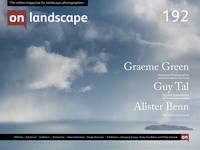Whereof one cannot speak, thereof one should create art
The Equivalent is one of those ideas that in practice grows by the efforts and accomplishments of the people who explore it. ~ Minor White
In the late 1920s, Alfred Stieglitz coined the concept of equivalence in photography, suggesting that photographs may have expressive powers beyond just representing the appearances of things. In particular, he was referring to photographs that are, at least to a degree, abstract.
The abstraction Stieglitz referred to is not the same as what we generally think of as “abstract art” today (i.e., art that is mostly, or completely, devoid of recognisable elements). What Stieglitz has shown is that by obscuring or omitting obvious reference points in a photograph (things such as uniquely interesting subject matter, prominent faces and figures, or other elements that viewers may consider as the obvious subject of a photograph), the subject of a photograph may become a mood, or a feeling, rather than a thing, or a view. The goal is to design a photograph such that the experience one will have when viewing it, will be equivalent with the experience of the photographer when making it.
Although perhaps not immediately obvious, the importance of equivalence is quite profound: it is the quality that allows photographs to venture beyond objective representation, and instead (or in addition) also express subjective experience. As such, equivalence can also be said to be the quality that makes photography a suitable medium for art (art being a deliberate, subjective, creation), rather than just a technology for recording objective views.



